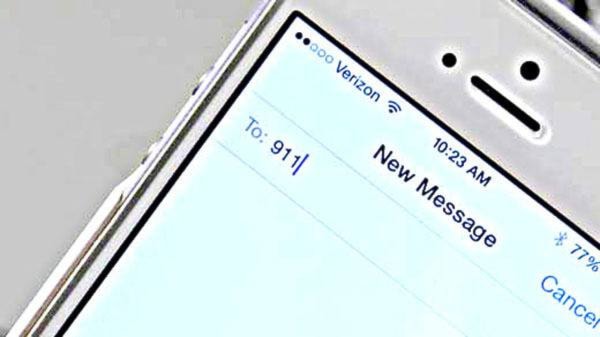Last week regional districts in B.C.’s central and southern interior announced the availability of a specialized text service that allows people who are Deaf/Deaf-Blind, Hard-of-Hearing or Speech Impaired (DHHSI) to communicate with 9-1-1 call-takers by text.
This service is called Text with 9-1-1 (T9-1-1) and is being delivered by E-Comm - the emergency communications centre responsible for answering 9-1-1 calls in the central and southern interior in partnership with local emergency service agencies. The service is now available throughout the Central Okanagan. North Okanagan, Central Kootenay, Columbia-Shuswap, Okanagan-Similkameen, Thompson-Nicola, East Kootenay, Kootenay-Boundary and Squamish-Lillooet Regional Districts.
“T9-1-1 is a vital connection to police, fire and ambulance and enables quick communication between a deaf caller and emergency services,” remarked Gordon Rattray, treasurer of the Okanagan Valley Association of the Deaf (OVAD). “In the past deaf people were limited by communication barriers and would have to use phone relay or TTY (telephone typewriter) which would take five or ten minutes longer. The OVAD is very excited to have T9-1-1 in the interior regional districts and we look forward to helping promote the availability of this service with the DHHSI community. We’re proud of this enhancement to emergency services that E-Comm provides.”
T9-1-1 allows any DHHSI person who has pre-registered their cellphone with their wireless carrier to communicate with police, fire and ambulance call-takers via text during an emergency. Callers must first place a voice call to 9-1-1 in order to establish a voice network connection and initiate the special messaging technology.
“Extending 9-1-1 services through text messaging is an important step in the evolution of using technology to keep all residents of the Thompson-Nicola Regional District safe,” says TNRD chair John Ranta. “E-Comm’s outstanding track record of high quality and reliable 9-1-1 answering services, means all residents in the affected regional districts, whether they have hearing or speech impairments or not, can be assured there will be professionally handled, quick responses to their initial calls.”
When E-Comm receives a 9-1-1 call from a DHHSI person who has pre-registered for the service, an alert will trigger at the 9-1-1 centre to indicate there is a DHHSI caller on the line. The 9-1-1 call-taker will then launch the special messaging system, allowing them to communicate with the caller through a special text session. This will ensure they get the emergency service they need.
“Being able to communicate with 9-1-1 using this technology allows for greater access to important 9-1·1 lifelines in the event of an emergency,” added David Guscott, E-Comm president and CEO. “E-Comm is proud to be able to offer this enhanced level of service to our partners in the central and southern interior of B.C.”
It is important to emphasize that this service is only available to the DHHSI community.
Voice calling remains the only way to communicate with 9-1-1 services for a person who is not Deaf/Deaf-Blind, Hard-of-Hearing or Speech Impaired. Text messages sent directly to the digits “9-1-1” do not reach emergency services anywhere in Canada. Text with 9-1-1 for the public-at-large is anticipated in the future as the nationwide 9-1-1 infrastructure evolves.
Members of the DHHSI community should visit www.TextWith911.ca to register their cellphone with their wireless service provider and to learn more about how the system works.
